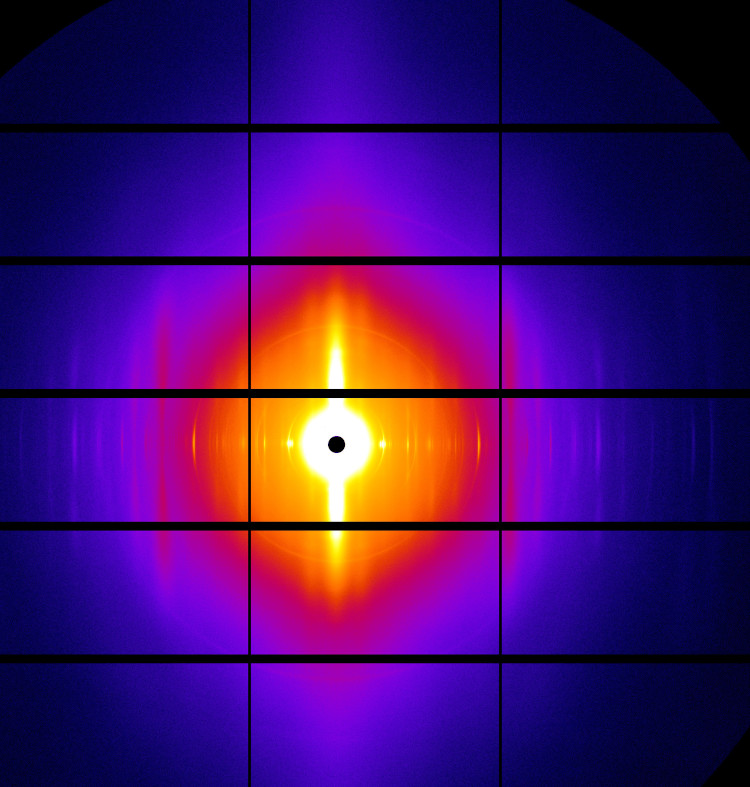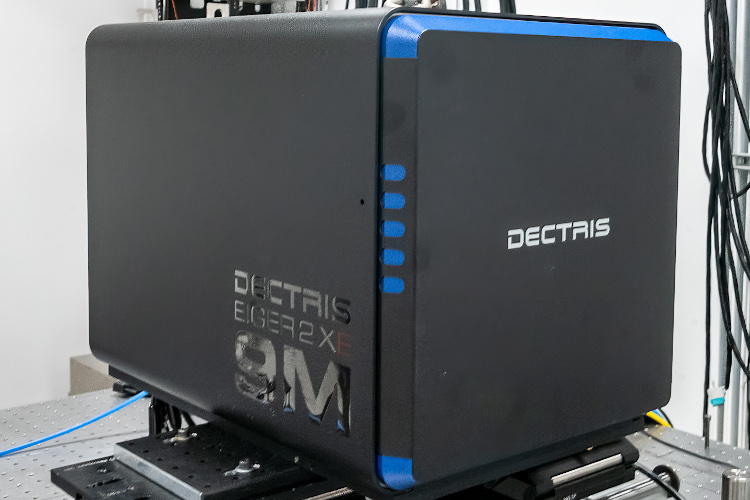We are a pleased to announce the delivery and initial commissioning (November 16 2021) of our new $1.8M, Dectris EIGER2 XE 9M pixel array detector which replaces our Pilatus3 X 1M detector after 7 years of reliable service. This state-of-the-art detector has dead-time free readout and a larger active area (233 x 245 mm2 vs. 169 x 180 mm2), much smaller pixels (75 μm vs. 172 μm) and faster frame rate (550 Hz vs 500 Hz) than the Pilatus detector. The larger area of the EIGER2 will extend the maximum q in macromolecular SAXS experiments in the standard configuration from ~0.35 Å-1 to ~0.50 Å-1. More excitingly, the combination of large active area and high spatial resolution of the EIGER2 detector will allow using one 3 m camera length for the majority of muscle diffraction experiments providing resolution of fine details on the meridian at low angles as well as recording the important 2.7 nm actin and 2.8 nm myosin meridional reflections at the same time. This will significantly increase the information content of our experiments, improve efficiency by minimizing need to change camera lengths and raise overall productivity. The lack of dead time between frames will allow use of essentially all the photons in fast framing time-resolved experiments. These new capabilities have been demonstrated in three muscle diffraction experiments with outside users so far.
The faster frame rate and much increased pixel density have greatly increased data transfer, storage, and processing requirements. To handle these high data rates we have procured a dedicated, Dell PowerEdge R940xa processing server with 36 cores (3.1 GHz), 1.2 TB RAM, 6 TB local storage, 25 GbE, and a NVIDIA Tesla V100s 32G GPU. This will allow for real time data reduction in even the fastest SAXS experiments, and rapid on-line data analysis for both SAXS and muscle diffraction. We are also in the process of upgrading and expanding our network attached storage (NAS) to accommodate the significantly increased data volume from this detector.
We are excited about these new capabilities that should provide reliable operations and high performance for many years to come.

